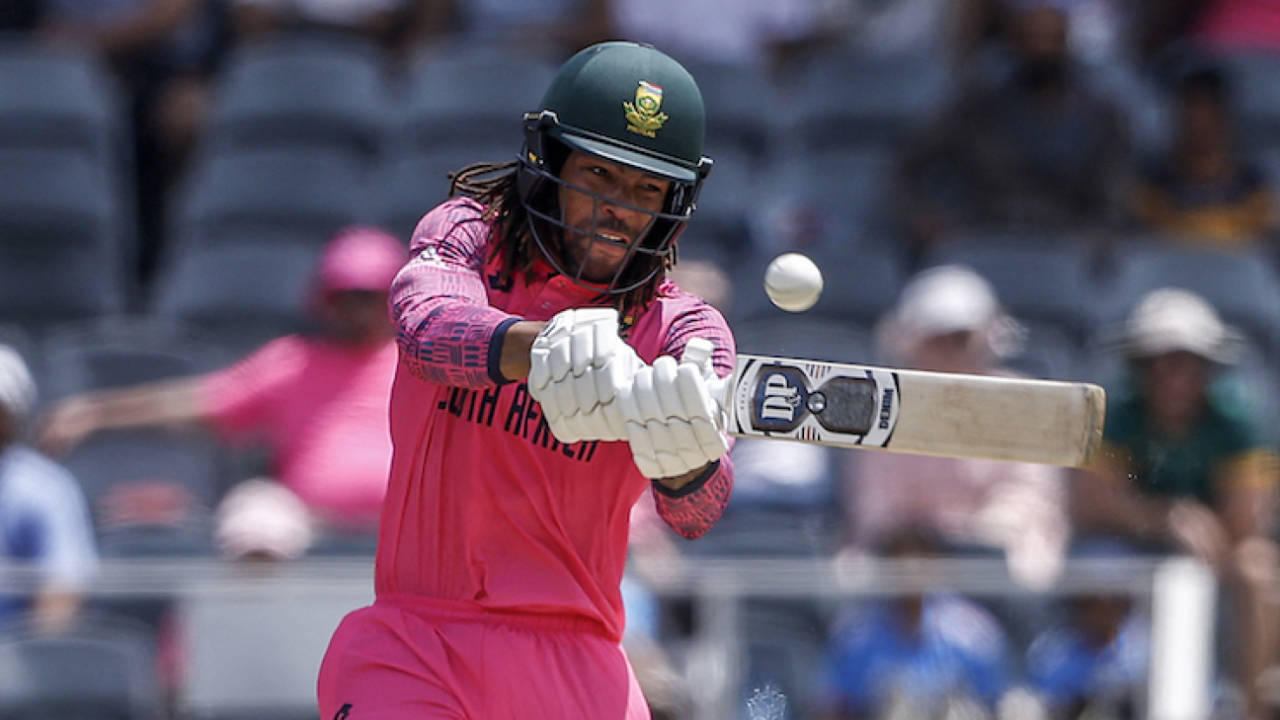Scoring runs in challenging conditions is the next hurdle for South Africa's batters as they continue to develop their style of play under a fairly new coaching staff.
It came in the third game after they were
shot out by India for 83 at the World Cup, which was Duminy and head coach Rob Walter's first major tournament after they were appointed in February. At that point, the bulk of South Africa's World Cup Super League campaign had been run and they were on the verge of missing out on automatic qualification to the 2023 World Cup but scrapped their way in when they
beat Netherlands at home. From that point, they appeared to be a team transformed.
At the World Cup, they topped 350 four times in seven matches and broke the record for the highest World Cup score in their tournament opener
against Sri Lanka, before being humbled by India and losing in the
semi-final. So how do South Africa veer from dominating attacks to being dominated from match to match? If you believe Duminy, it's because they're still figuring things out under a management that has only overseen them in two series (West Indies and Australia) and the World Cup so far.
"When you are trying to build a brand and a style of play, you are potentially going to have those contrasting experiences," he said at the post-match press conference. "That's where the learning happens. Part of how you find consistency is actually experiencing either or and then understanding why things are happening. That's the journey for us. When it's good, we are really good. When conditions are good, we can score 400 but how do we still find our way to 280 on a tough wicket? That's the question for us."
It's not only about the pitch but also about the quality of the bowling. At the World Cup, South Africa (and they were not the only ones) could not get Mohammed Siraj or Jasprit Bumrah away in the early stages of their reply to India's 326 and were 35 for 3 in the Powerplay. In the semi-final, sensational opening spells from Mitchell Starc and Josh Hazelwood left them on 32 for 4 after 13 overs. Then, David Miller, with assistance from Heinrich Klaasen, showed the temperament to haul them over 200. But a match later, Mukesh Kumar (though he did not take any wickets), Arshdeep Singh and Avesh Khan kept them to 116 and there was no-one to absorb or transfer pressure.
"Tony has all the attributes to be consistent. What I really enjoyed was still finding a way of scoring above 100 strike rate under those difficult circumstances and the conviction in his movement, the conviction in his options and his clarity and commitment to his shots."
JP Duminy on Tony de Zorzi
Duminy identified the relentlessness in the disciplines of Indian attack juxtaposed with reticence from his own line-up to take the game forward as the root cause of the issue. "The thing that stands out for me is consistency. If you assess conditions and understand where the biggest threat is, you have to land the ball there consistently. Think of
Arshdeep [Singh] and his ability to swing the ball up front as well as nibble it. He was asking those questions consistently, so you were always under pressure and when you don't have those answers, today happens," he said. "It's about coming up against the conditions and the opposition and finding the right formula."
In essence, it sounds as though South Africa's problem is that they're being moulded into an outfit that plays aggressive cricket, as is the way of the modern game, but if they are put on the back foot, they don't always know how to recover.
One player who showed glimpses of that was new opener
Tony de Zorzi. After Reeza Hendricks and Rassie van der Dussen were dismissed for ducks, de Zorzi took the fight to India when he hit Mukesh over point for six and through extra cover in the same over, then drove him through the off side for two boundaries in the next over and even short-arm pulled Arshdeep for six. He misjudged his next pull and top-edged to end his innings on 28 but ended up scoring at greater than a run a ball and rebuilding some momentum.
"Tony has all the attributes to be consistent," Duminy said. "What I really enjoyed was still finding a way of scoring above 100 strike rate under those difficult circumstances and the conviction in his movement, the conviction in his options and his clarity and commitment to his shots. He is aggressive in nature, particularly in how he wants to play the game so it's exciting to see."
De Zorzi will play the rest of the series alongside Reeza Hendricks and is likely to come into South Africa's long-term plans, especially after Quinton de Kock's ODI retirement. Luckily for him, and Duminy, they have time to fine-tune the way they want the batters to go about things. "If you think where do we go from here - the Champions Trophy and the 2027 World Cup - it may be far away but understanding that brand is important," Duminy said. "For now, it's about identifying the how. In certain conditions - how are we going to play?"
The short answer is: hopefully not the way they did at the Wanderers.
